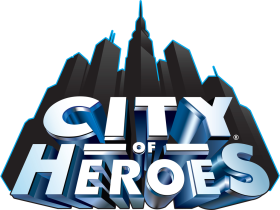ZAM Tours City of Heroes: Issue 20 with Developers
Staff Writer Paul "LockeColeMA" Cleveland got the chance to explore the game's latest update at an NCsoft event with members of the development team.

I recently wrote about my experiences with Aion's 2.5 update, which I was able to enjoy at NCsoft’s offices in San Francisco. However, Aion was the second half of the event; the first course was with an entirely different team and focused on City of Heroes, particularly Issue 20. Lead Producer Nate Birkholz and Lead Systems Designer Matt Miller of Paragon Studios were able to give us a detailed look at the history of City of Heroes up to this point, to clue us in on what makes the game a hardened veteran in the saturated field of superhero MMOs, and to lead us through Lambda Sector, one of the new Incarnate Trials.
Following a discussion on the new Global Server Access feature that was recently launched to unify the North American and European servers on the same list, the team jumped right into the six key advantages that have allowed City of Heroes to stay competitive since 2004.
 City of Heroes is well-known for its customization options. Now, all games offer this to some extent; many games allow you to choose a character race, class, hair and maybe even facial features or markings. CoH takes customization to extremes, allowing several options for body type, skin tone and a plethora of options for the costumes, including weapons and even spell sound effects. Creating a character is one of the most enjoyable pursuits for many players.
City of Heroes is well-known for its customization options. Now, all games offer this to some extent; many games allow you to choose a character race, class, hair and maybe even facial features or markings. CoH takes customization to extremes, allowing several options for body type, skin tone and a plethora of options for the costumes, including weapons and even spell sound effects. Creating a character is one of the most enjoyable pursuits for many players.
When it comes to game content itself, NCsoft and Paragon Studios say they strive for constant and consistent updates. Averaging three free large updates (called “Issues”) per year, CoH also has a stand-alone and compatible sequel called City of Villains as well as the expansion, City of Heroes: Going Rogue. Tying into these updates are smaller, purchasable super booster packs, which add mostly vanity features such as new emotes, costumes and powers.
Finally, the premise of the franchise has three key advantages. First, the City of Heroes universe is its own unique intellectual property, fully owned by the company. This means that unlike other games using famous comic books, the team can make changes and add content without checking with outside sources for their permission. Second, the game allows for side-kicking and dynamic difficulty scaling. Players can alter their own levels with the side-kicking system, allowing for friends of different power scales to play side by side. The difficulty and number of enemies also scale to how many players are in a league (group) together; but if a single player finds the difficulty too easy, they can adjust it up to make the going a bit tougher. Finally, CoH offers limitless story possibilities through the mission architect. Using this feature, players can actually create their own stories and missions to share with other players, who can rate them and publish them to the community at large.

After chatting about the best parts of City of Heroes, the team introduced us to the meat and potatoes of Issue 20. This issue continues the storyline of the Praetorian invasion started in the Going Rogue expansion. The issue is named “Incarnate” for the trials and new trees available to players, and while the content focuses mostly on the end-game, it includes some missions for mid-level players as well. Heroes and villains have different missions and different rewards; for example, a villain completing the Incarnate Strike Force will receive a permanent buff that lasts until level 50.
Continued on Page 2.




